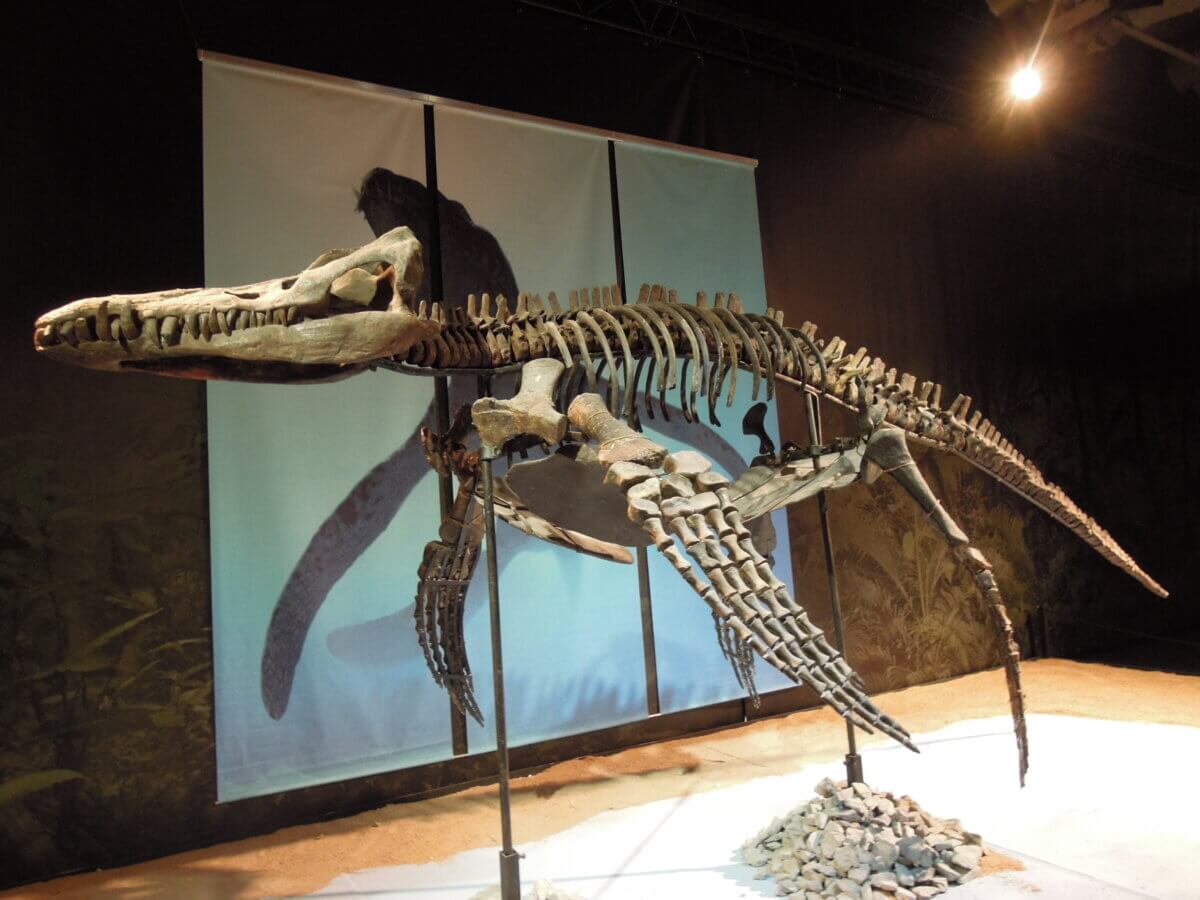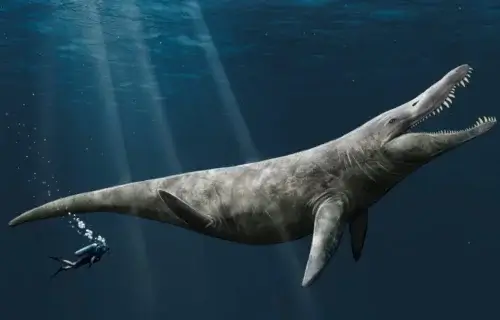PORTSMOUTH, United Kingdom — A remarkable finding at an Oxfordshire museum is shedding new light on the size of prehistoric marine reptiles. Paleontologists from the University of Portsmouth are sharing their discovery after stumbling upon a collection of four enormous vertebrae, closely related to a species of Pliosaurus. This discovery suggests that these ancient creatures could have grown to a jaw-dropping length of up to 47 feet — twice the size of a killer whale!
The renowned BBC TV series “Walking with Dinosaurs” sparked heated debates over the size of Liopleurodon, a type of pliosaur, more than two decades ago. Initially believed to be a colossal 82-foot creature, subsequent investigations proposed a more modest adult size of just over 19 feet. However, the recent fortuitous discovery has reignited the discussion, with the newfound evidence indicating that pliosaurs could be significantly larger than previously thought.
“I got the size of Liopleurodon horrendously wrong,” Professor David Martill from the University of Portsmouth’s School of the Environment, Geography and Geosciences admits in a media release. As a consultant for the BBC’s program “Cruel Sea,” he based his calculations on limited and controversial evidence. The inaccuracies caused significant controversy at the time, but the recent finding provides a more reliable basis for estimation.
The incredible find came about when Megan Jacobs, a co-author of the study, was photographing an ichthyosaur skeleton at Abingdon County Hall Museum. Meanwhile, Professor Martill explored fossil-filled drawers and came across a large vertebra. To their delight, the museum’s curator had three more of these remarkable vertebrae in storage. It became evident that these vertebrae closely resembled those of the Pliosaurus species or a related animal.

Through detailed topographic scans, Prof. Martill and his colleagues calculated that this Late Jurassic marine reptile could have reached an astonishing length of between 9.8 and 14.4 meters. These pliosaurs, with their elongated heads resembling crocodiles, were fearsome predators at the top of the marine food chain. Armed with massive skulls boasting dagger-like teeth, they were likely to have preyed upon ichthyosaurs, plesiosaurs, and possibly even smaller marine crocodiles. Bite marks on ichthyosaur bones further attest to the ferocious hunting nature of these ancient creatures.
The vertebrae were originally discovered during temporary excavations at Warren Farm in the River Thames Valley, Oxfordshire. These fossils belong to the Kimmeridge Clay Formation, estimated to be around 152 million years-old, dating back to the Late Jurassic period.
While not yet surpassing the claims made about Liopleurodon in the iconic BBC series, Prof. Martill remains optimistic about future discoveries.
“It wouldn’t surprise me if one day we find clear evidence that this monstrous species was even bigger.”
This finding adds to our understanding of the incredible diversity and colossal size of ancient marine reptiles, continuing to capture our imagination and inspiring further exploration of our prehistoric past.
The paper is published in The Proceedings of the Geologists’ Association.


Do we have a prehistoric past ?